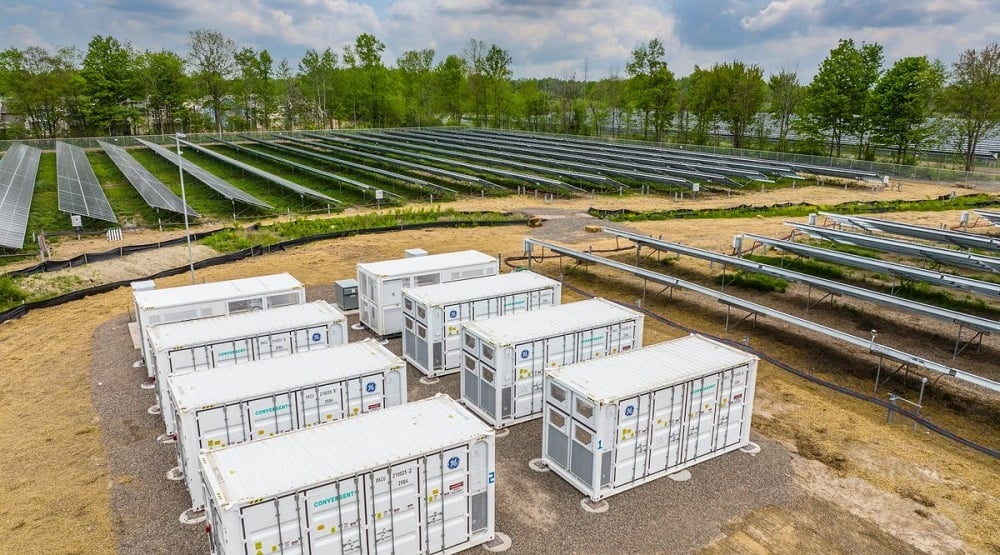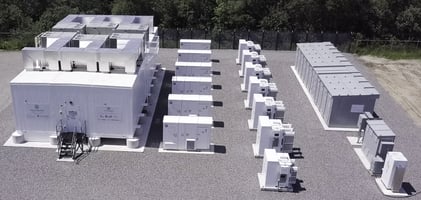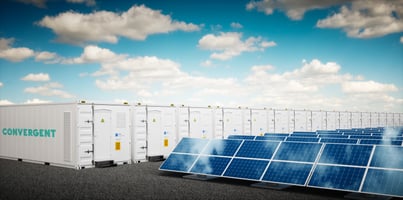The U.S. Energy Storage Market: Why and Where it is Growing—and What Comes Next

Energy storage is the linchpin of the clean energy transition, which is reflected by the energy storage market's meteoric growth. Wood Mackenzie, a leading global provider of data for the energy sector, shows a 100% increase in 2022-23, with another 45% jump expected in 2024.
The first quarter of 2024 has already set a record1 for energy storage capacity with 1,265 megawatts (MW) deployed, an 84% increase over Q1 2023. Despite challenges that include tariffs and interconnection delays, the momentum in the energy storage sector is undeniable, driven by the urgent need to manage and “firm” the influx of renewable energy and enhance grid capacity and reliability. In addition, energy storage (typically in the form of battery storage), can be used to reduce rising energy costs.
In this blog, we’ll cover what is driving the unprecedented growth of the energy storage sector, address challenges the industry needs to navigate, and show how energy storage unlocks major opportunities for businesses and communities.
Energy Storage 101: A Quick Primer
Before diving in, what exactly is energy storage?
Energy storage systems allow electricity to be stored—and then discharged—at the most strategic times. Today, Lithium-ion batteries, the same batteries that are used in cell phones and electric vehicles, are the most commonly used type of energy storage. Like the batteries in your cell phone, utility-scale battery energy storage systems can be charged with electricity from the grid, stored, and discharged when there is a deficit in supply or when energy is most expensive.

When battery storage is paired with solar PV (known as solar-plus-storage), batteries can utilize solar energy whether or not the sun is shining.
Solar-plus-storage can extend the value of solar energy by providing reliability to your business or community’s energy capacity needs. Pairing solar PV with battery storage can also be an essential cost-saving tool by capturing additional solar energy during certain times when electricity rates are low and discharging it during times when electricity rates are high.
Battery storage (with or without solar PV) can help businesses reduce energy costs by seven figures and utilities increase capacity and reliability and decrease costs for their customers.
Why is the Energy Storage Sector Growing So Rapidly?
Several factors are accelerating energy storage growth:
📉 Declining battery costs: Lithium-ion battery prices have dropped nearly 90% over the past decade.
🏦 Policy support: The Inflation Reduction Act (IRA) offers a 30% tax credit for energy storage projects, making these systems more accessible and financially viable for businesses, utilities, and developers.
✅ Renewable penetration and state policies: High levels of renewable energy penetration in regions like ERCOT and CAISO are driving growth by increasing the need for more energy storage on the electric grid. State mandates in New York, Massachusetts, and the desert southwest are also accelerating storage deployments to meet ambitious carbon reduction goals. The desert southwest is expected to see a 14-fold increase in installed storage capacity by 2033, reaching nearly 30 GW.
📝 New contracting models: Innovative agreements, such as tolling contracts in Texas, allow risk-seeking operators to optimize operations, while conservative investors secure steady revenue streams, providing more financial security for project developers.
Critical Obstacles: Tariffs and Interconnection Hurdles
While multiple factors are accelerating energy storage growth, there are still significant challenges that could hinder the industry's momentum.
The recent increase in Section 301 tariffs on lithium-ion batteries imported from China, set to take effect in 2026, is expected to raise costs by an estimated 10-15%, which could temper growth projections. These tariffs could add up to $200 million in costs across the industry annually. However, the impact may be mitigated by potential manufacturing shifts within Asia or an increase in U.S. domestic production, both of which are already underway.
Interconnection delays also pose a significant challenge. Developers across various markets are struggling to secure timely grid connections for their projects. Interconnection queues have ballooned, with some estimates showing that over 1,000 GW of projects are currently waiting for approval, more than double the actual capacity expected to be built. The new FERC interconnection rule (Order No. 2023) aims to streamline this process, but Independent System Operators (ISOs) will need time to adapt and clear the existing backlog.
Where Are the Key Opportunities for Energy Storage Today?
Grid-scale storage continues to dominate the U.S. market, with key regions like ERCOT and CAISO leading the charge. These areas, characterized by high levels of renewable energy penetration, present significant opportunities in wholesale energy markets. By 2028, ERCOT is expected to have over 20 GW of installed energy storage capacity, a nearly 400% increase from current levels. CAISO is following closely, with a forecasted 15 GW by the same year.
In Texas, innovative contracting models, such as tolling agreements, are emerging and further boosting growth. These agreements pair risk-tolerant players—those with the technical savvy to optimize operations in real-time price volatility—with more conservative investors who seek steady revenue streams.
In California, major utilities are locking in long-term contracts for energy and resource adequacy, leaving additional market opportunities for project developers. These contracts, often stretching 10-15 years, provide the financial stability needed to secure project financing.
State-level policies are also playing a pivotal role in driving storage growth. The desert southwest, for example, is expected to see a 14-fold increase in installed storage capacity by 2033, reaching nearly 30 GW. New York and Massachusetts continue to advance their storage projects, driven by state mandates to achieve significant carbon reduction goals. By 2030, New York aims to have 6 GW of energy storage capacity installed, while Massachusetts targets 3 GW by the same year.
The Key Takeaways for Your Organization: Energy Storage is Well-Positioned for Massive Growth
The U.S. energy storage market is set for remarkable growth, supported by favorable policies, technological advancements, and an increasing need for grid resiliency. Despite challenges like tariffs and interconnection delays, the industry is well-positioned to continue its upward trajectory and play a pivotal role in the nation’s transition to a clean energy future.
Learn more Connect with Convergent
The future of energy is already here.

Convergent has been in the energy storage industry since its infancy, more than a decade ago. Throughout that time, we’ve gained experience and expertise, working closely with businesses and utilities to take the hassle out of energy storage by building, owning, and operating systems on their behalf. We’re proud to say that it has never been easier to integrate energy storage into your business or utility and the time has never been better.
To sum it up, the future of energy depends on our ability to store it. We need energy storage to accelerate the clean energy transition, reduce costs, and increase reliability for businesses, utilities, and communities.
To learn more about how an energy storage system or solar-plus-storage (paired solar PV and battery storage) can benefit your business or utility, schedule a free, no-obligation introductory call with our team today.
References:
1 US energy storage market sets Q1 capacity installation record | Wood Mackenzie


